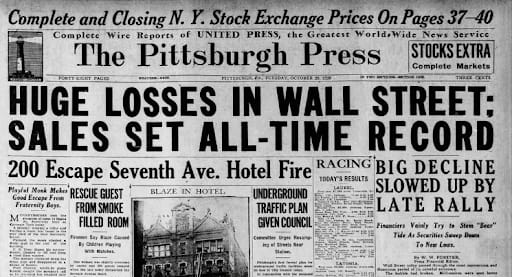- Live Life Grow Wealth
- Posts
- 💹 Series 8 Day 4: Candlestick Patterns That Reveal Market Psychology
💹 Series 8 Day 4: Candlestick Patterns That Reveal Market Psychology

Today’s Headline
💹 Series 8: Mastering Technical Analysis
Day 4: Candlestick Patterns That Reveal Market Psychology
When I first learned technical analysis, I used to stare at candlestick charts and wonder, “Why do they look so complicated?”
Green bars, red bars, long wicks, short wicks — everything looked random.
But over time, I realised something powerful.
Candlesticks are not random at all… they are stories.
Each candlestick shows a battle between buyers and sellers.
It shows fear, confidence, hesitation, greed, panic, and hope — all packed into one tiny shape.
Once I understood how to read these stories, the market became much easier to understand.
Today, I want to help you unlock the same skill.
And don’t worry — I’ll explain everything simply, in a way even a 12-year-old can grasp.
By the end of this, you’ll be able to look at a chart and instantly know what’s happening beneath the surface.
You’ll be able to spot trend reversals, strong buying pressure, and early warning signs.
Let’s dive into the psychology behind candlestick patterns.
“Click Here to Join the Billion-Dollar Art Revolution — Invest in Iconic Paintings Through Masterworks!”
Crash Expert: “This Looks Like 1929” → 70,000 Hedging Here
Mark Spitznagel, who made $1B in a single day during the 2015 flash crash, warns markets are mimicking 1929. Yeah, just another oracle spouting gloom and doom, right?
Vanguard and Goldman Sachs forecast just 5% and 3% annual S&P returns respectively for the next decade (2024-2034).
Bonds? Not much better.
Enough warning signals—what’s something investors can actually do to diversify this week?
Almost no one knows this, but postwar and contemporary art appreciated 11.2% annually with near-zero correlation to equities from 1995–2024, according to Masterworks Data.
And sure… billionaires like Bezos and Gates can make headlines at auction, but what about the rest of us?
Masterworks makes it possible to invest in legendary artworks by Banksy, Basquiat, Picasso, and more – without spending millions.
23 exits. Net annualized returns like 17.6%, 17.8%, and 21.5%. $1.2 billion invested.
Shares in new offerings can sell quickly but…
*Past performance is not indicative of future returns. Important Reg A disclosures: masterworks.com/cd.
🔥 Why Candlestick Patterns Matter
Price moves because people buy and sell.
Candlestick patterns show you how people are behaving at any moment.
You’re not just looking at shapes — you’re reading emotions.
You’re interpreting crowd psychology.
Here’s why candlestick patterns matter:
They show you where buyers are getting stronger
They reveal where sellers are losing control
They help you predict possible trend reversals
They give you confidence to enter and exit at better prices
They reduce emotional decisions
Understanding these patterns is like learning body language.
Someone may say they are fine… but their body tells another story.
The market is the same.
🟩 Understanding the Basics First
Before we get into patterns, you need to know what a candlestick tells you.
Every candlestick shows four important prices:
Open (where the price started)
High (the highest price reached)
Low (the lowest price reached)
Close (where the price ended)
If the candle is green, price closed higher than it opened.
If it’s red, price closed lower.
The “body” is the thick part.
The “wicks” or “shadows” are the long thin lines above and below.
These wicks show rejection, fear, and aggression.
Wicks tell the real story.
🌟 Pattern 1: The Hammer — A Strong Reversal Signal
The Hammer is one of my favourite candlestick patterns.
It appears after a downtrend and looks like a tiny body sitting on top of a long lower wick.
It literally looks like a hammer pointing downwards.
And it shows that buyers just punched back.
Here’s what happened during a Hammer:
Sellers pushed the price down hard
Buyers came in aggressively
Buyers pushed the price back up before the candle closed
The long lower wick shows rejection of lower prices
In simple words:
Buyers refused to let the price fall further.
When I see a Hammer after a long drop, I pay attention.
It shows buyers are stepping in.
🌑 Pattern 2: Inverted Hammer — Strength After Weakness
The Inverted Hammer also appears after a downtrend.
This time it looks like a small body at the bottom, with a long upper wick.
The buyers tried to push price up strongly, but sellers forced it back down.
Still, buyers showed strength.
This pattern tells me:
Buyers are beginning to enter
Sellers may be losing pressure
Trend could be preparing to reverse
It’s a warning sign for sellers and a hopeful sign for buyers.
🟥 Pattern 3: Shooting Star — Trouble at the Top
The Shooting Star is the cousin of the Inverted Hammer, but it appears at the top of an uptrend.
It looks like a small body with a long upper wick.
Sellers took control near the end of the candle.
This shows strong rejection of higher prices.
Here’s the psychology:
Buyers pushed price up
Sellers smashed it back down
The uptrend may be weakening
Whenever I see a Shooting Star near resistance, I become cautious.
It often signals a potential trend reversal downward.
🟥 Pattern 4: Bearish Engulfing — A Sudden Shift in Power
This is a powerful reversal pattern that appears at the top of an uptrend.
A small green candle is followed by a large red candle that completely engulfs the first one.
This tells you the sellers crushed the buyers.
The shift in power is very clear.
Psychology behind it:
Buyers were in control
Sellers suddenly stepped in aggressively
Momentum shifted downward
Weak hands may start selling
This is one of the clearest signals that buyers are losing steam.
🟩 Pattern 5: Bullish Engulfing — The Buyers Take Over
The opposite of the Bearish Engulfing.
A small red candle is followed by a large green candle that fully covers it.
This shows that buyers have overpowered sellers.
It often signals the start of a new uptrend.
When I see this at a support zone, I get excited.
It shows strength.
It shows confidence.
It shows buying pressure rising fast.
“Feeling Stuck in Your Job? Click Here to Get Smart, Practical Advice from AtWorkDaily”
13 Investment Errors You Should Avoid
Successful investing is often less about making the right moves and more about avoiding the wrong ones. With our guide, 13 Retirement Investment Blunders to Avoid, you can learn ways to steer clear of common errors to help get the most from your $1M+ portfolio—and enjoy the retirement you deserve.
💥 Pattern 6: Doji — Market Confusion or a Turning Point
A Doji is a candle where the open and close are almost the same.
It looks like a thin cross or plus sign.
A Doji tells you the market is indecisive.
Buyers and sellers are in a tug-of-war.
There are different types of Dojis:
Long-legged Doji
Dragonfly Doji
Gravestone Doji
The psychology remains the same:
No one is in control.
A Doji after a strong trend could signal a reversal.
A Doji in the middle of a trend may show consolidation.
🔄 Pattern 7: Morning Star — A Beautiful Bullish Reversal
The Morning Star is a powerful three-candle pattern.
It signals a shift from selling pressure to buying pressure.
It usually appears at the bottom of a downtrend.
It’s one of the strongest bullish signals.
The pattern looks like this:
A long red candle (strong selling)
A small candle showing hesitation
A long green candle showing buying strength
The psychology is clear:
Sellers were in control
The market paused
Buyers regained control
This pattern is highly respected by many traders.
🌇 Pattern 8: Evening Star — Danger Signal for Bulls
The Evening Star is the opposite of the Morning Star.
It appears at the top of an uptrend.
It signals exhaustion and the beginning of a downtrend.
It is a very reliable warning sign.
It has three candles:
A strong green candle
A small hesitation candle
A strong red candle
The message is simple.
Buyers are losing power. Sellers are taking over.
Whenever I see this, I prepare for a possible drop.
📉 Pattern 9: Spinning Tops — Small Body, Long Wicks
A Spinning Top has a small body with long wicks on both ends.
This shows uncertainty and balance between buyers and sellers.
It’s not a strong reversal signal by itself.
But it’s an important warning of indecision.
Spinning Tops appear when the market is tired.
The trend may slow down.
Momentum may be fading.
But it’s not enough to predict a reversal alone.
I usually wait for the next candle to confirm direction.
🔍 Why Candlestick Patterns Work
Candlestick patterns work because they represent human behavior.
When buyers panic, the candle shows it.
When sellers become greedy, the candle reflects it.
Charts don’t lie — emotions do.
Candlestick patterns work because:
People repeat the same mistakes
Crowd behavior rarely changes
Fear and greed drive the market
Institutions leave footprints
Patterns appear again and again
Once you learn to recognise them, you’ll see them everywhere.
🧠 How I Use Candlestick Patterns in My Analysis
Whenever I look at a chart, I do not depend on candlesticks alone.
I combine them with support, resistance, and trendlines.
This gives me a clearer picture.
It reduces wrong signals.
Here’s my simple routine:
Identify the trend
Look for support and resistance
Observe candlestick patterns around key levels
Confirm with multiple signals
Only then make a decision
This approach keeps me calm and logical.
📊 Candlestick Patterns Near Key Levels Are More Powerful
A Hammer in the middle of nowhere is weak.
A Hammer at a major support zone?
Very strong.
A Shooting Star that appears randomly might not mean anything.
But at the top of an uptrend?
That’s a warning worth paying attention to.
Candlesticks become meaningful when:
They appear at trendlines
They form near support and resistance
They confirm existing momentum
They follow strong market moves
Context matters.
Candles alone are not enough.
Patterns + location = clarity.
📚 Real-Life Example (Explained Simply)
Imagine a stock that’s been falling for many days.
Everyone is selling, panic is rising.
Then suddenly, you see a Hammer forming at a strong support zone.
The long lower wick shows strong buying pressure.
The next day, a green candle appears.
This tells you buyers are finally stepping in.
This is where many smart investors buy.
Not at the top… but at the turning point.
This is how candlestick patterns help you buy smarter.
📝 Quick Summary (Easy to Remember)
Bullish Signals
Hammer
Inverted Hammer
Bullish Engulfing
Morning Star
Bearish Signals
Shooting Star
Bearish Engulfing
Evening Star
Gravestone Doji
Neutral Signals
Doji
Spinning Top
These are the core patterns every investor should recognise.
They will help you see price action clearly.
Final Takeaways
Candlestick patterns are not magic.
They do not predict the future.
But they give you insight that most people ignore.
They show you the hidden emotions behind every market move.
If you want to improve your investing game, learn to read these patterns.
Practice every day.
Observe how price moves.
Watch how patterns react near support and resistance.
The more you practice, the clearer the story becomes.
📣 Call to Action
If you want me to break down real charts step-by-step using these candlestick patterns, just reply “SHOW ME” and I’ll create a live demonstration series for you.
And if you’re enjoying this Technical Analysis series so far, let me know — your feedback helps me prepare even better lessons for you.
Let’s continue building your market confidence, one candle at a time.
[Live Life Grow Wealth]
🎓 Free Masterclasses to Unlock Your Investment Potential
Take your money skills to the next level with expert-led workshops designed to help you grow smarter and faster.
Recommendations Section
“Peek into smart money moves — when big players act, you’re in the loop.”
|
Learn simple, proven ways to grow your money — straight from real investors who walk the talk.
|
“Hone your investing edge in just 5 minutes — smart, snappy insights to power your portfolio growth.”
|
“Stay ahead with one expert-picked stock monthly — clear, no jargon, built for growth.”
DISCLAIMER
I make no representations, warranties, or guarantees, whether expressed or implied, that the content provided is accurate, complete, or up-to-date. Past performance is not indicative nor a guarantee of future returns.
I am an individual content creator and not regulated or licensed by the Monetary Authority of Singapore (MAS) as I do not provide investment services.
All forms of investments carry risks, including the risk of losing your entire invested amount. Such activities may not be suitable for everyone. You are strongly encouraged to seek advice from a professional financial advisor if you have any doubts or concerns.







